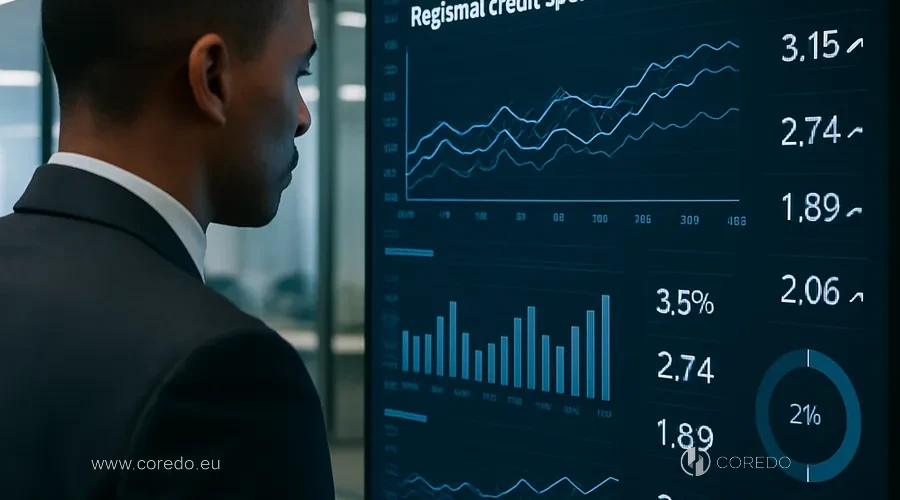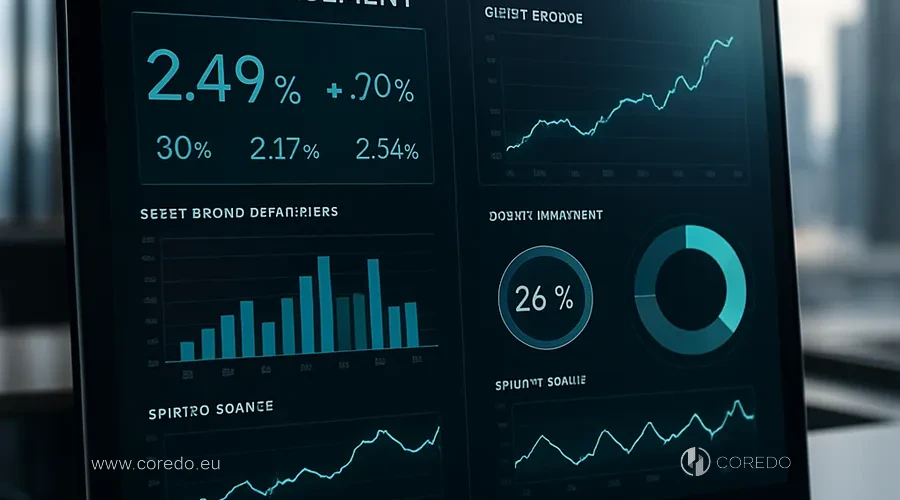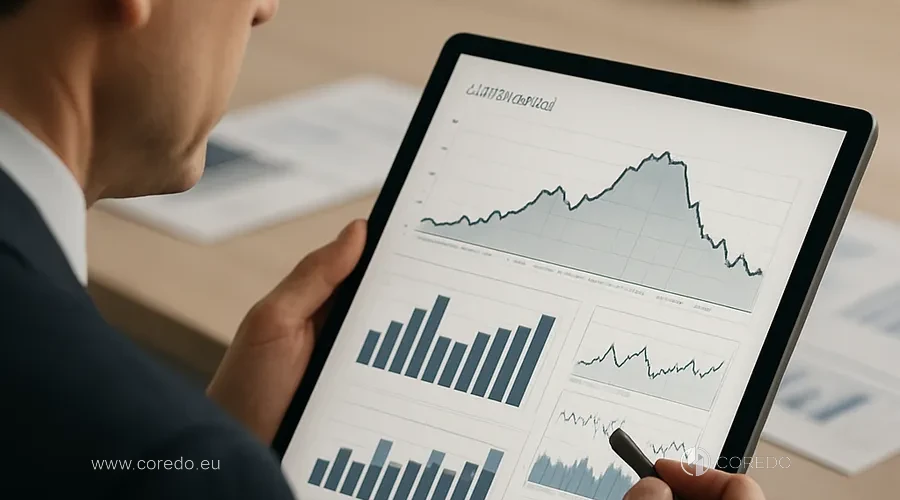The corporate bond market, an effective alternative to bank lending, especially in conditions of widening credit spreads.
Advantages:
- More flexible cost of borrowed capital
- Ability to hedge risks through financial derivatives
- Access to a broader pool of investors
Thus, choosing the optimal combination of financial instruments becomes especially relevant when managing credit spreads and associated risks across different regional markets.
Managing credit spreads and risks in Europe, Asia and the CIS

Particular attention is paid to the variety of approaches across regions – in Europe, Asia and the CIS, where the dynamics of credit spreads and banking regulation standards differ substantially and directly affect risk management strategies.
Regional credit spreads and banking standards

In Europe and Asia there are significant differences in the structure of credit spreads, capital requirements, and risk management standards. For example, in the EU the emphasis is on transparency and integration of ESG factors, while in Asia, on flexibility and speed of decision-making.
The COREDO team has implemented projects for registering legal entities and obtaining financial licenses in the Czech Republic, Slovakia, Singapore, Dubai and the United Kingdom, taking into account the specifics of regional banking standards and credit portfolio requirements.
International regulation and credit risk
International reporting standards (IFRS), Basel III/IV requirements and local regulation shape a unique legal environment for assessing and managing credit risk. It is important to consider:
- Financial monitoring standards
- Legal disclosure requirements
- Mechanisms for protecting the rights of creditors and borrowers
COREDO’s solutions include legal support for companies, integration of AML services and ensuring compliance with international standards.
Scaling business with new banking standards
To scale a business in an international environment it is critically important to:
- Diversify the credit portfolio
- Manage bank capital in line with new standards
- Implement hedging and crisis management strategies
COREDO’s practice confirms that a comprehensive approach to risk management allows companies to effectively expand business in Europe, Asia and the CIS.
Credit spreads and risk management in banks by 2025

Against the backdrop of changing key rate dynamics and rising debt market volatility, banks are forced to adjust approaches to risk assessment and the formation of credit terms.
Forecast of credit spreads and key interest rates for 2025
Analysis by leading rating agencies and bank analysts shows:
- High credit spreads in Europe and Asia are expected to persist through the end of 2025
- Central banks’ key rates will remain elevated, which will increase pressure on the cost of borrowed capital
- Companies with high credit ratings will be able to reduce spreads through transparency and diversification of funding sources
Impact of ESG and technology on banking risk and standards
ESG factors are becoming a key driver of changes in banking standards and credit spread management. Integration of sustainable practices, transparency and digitalization of risk management: trends that have already been implemented in COREDO projects.
The use of financial derivatives and hedging instruments allows companies to reduce risks and optimize capital structure.
Long-term consequences of new standards for business
The long-term consequences of changes in banking standards include:
- Increased requirements for liquidity and credit portfolio management
- The need to implement crisis management
- An increase in the role of automation and FinTech solutions
The COREDO team recommends integrating modern risk management methods and regularly updating capital management strategies.
Thus, the further development of the banking sector will require businesses to take a more attentive approach to credit spread issues and risk management.
Managing credit spreads and risks for businesses

Managing credit spreads and risks for businesses allows significant influence over the cost of borrowed funds and the level of financial threats to a company. Proper management of these instruments helps minimize costs and increase business resilience to external shocks.
How to reduce the impact of the credit spread on loan cost
To assess the impact of the credit spread on loan cost, use:
- Analysis of the credit portfolio structure
- Financial modeling taking macroeconomic factors into account
- Assessment of return on investment (ROI), considering spread dynamics
COREDO’s solutions allow minimizing the spread by diversifying funding sources and integrating alternative financingation.
Credit risk management in international companies
Key practices:
- Implementing risk management standards aligned with Basel IV and IFRS
- Regular stress testing and credit monitoring
- Automation of credit risk assessment and integration of FinTech solutions
COREDO’s experience confirms the effectiveness of a comprehensive approach to managing the credit spread for international companies.
Protecting business and optimizing lending through banking standards
Implement:
- New regulatory requirements for credit spreads
- Risk management tools in banks
- Transparent banking lending procedures
COREDO’s practice includes legal support for companies, registration of legal entities in the EU and Asia, as well as integration of AML services and financial monitoring.
How to choose a partner for legal and financial support of your business?
When choosing a partner, pay attention to:
- Depth of expertise in the international legal and financial field
- Experience in registering legal entities and obtaining licenses in the EU, Asia, and the CIS
- Comprehensiveness of services provided: from AML consulting to transaction support
The COREDO team supports clients at every stage: from company registration to obtaining financial licenses and implementing risk management.
Key takeaways and practical steps

- The credit spread is a key indicator of the cost of borrowed capital and the level of credit risk.
- The new 2025 banking standards require a comprehensive approach to risk and capital management.
- For international businesses, it is critical to integrate automation, FinTech solutions, and modern stress-testing methods.
- Alternative financing instruments (corporate bonds, derivatives, hedging) allow optimization of capital structure and risk reduction.
- Regular credit portfolio monitoring, legal support, and compliance with international standards are the foundation of business resilience.
Comparison of the impact of factors on the credit spread
| Factor | Impact on the credit spread | Comment |
|---|---|---|
| Key interest rate | High | Rate increases raise funding costs |
| Countercyclical buffer | Medium-High | Increases the bank’s capital requirements |
| Issuer’s credit rating | Critically important | Determines the level of risk and the cost of credit |
*Infographic (description):*
Mechanism of credit spread formation:
- Assessment of credit risk and rating
- Analysis of macroeconomic factors
- Consideration of regulatory requirements and banking standards
- Optimization of capital structure and selection of funding sources
- Monitoring and automation of risk management
*Links to regulatory documents and analytical reports:*
- Basel III/IV
- S&P Global, Moody’s, Fitch
- International Financial Reporting Standards (IFRS)
- Regulatory acts of the EU, the UK, Singapore, Dubai